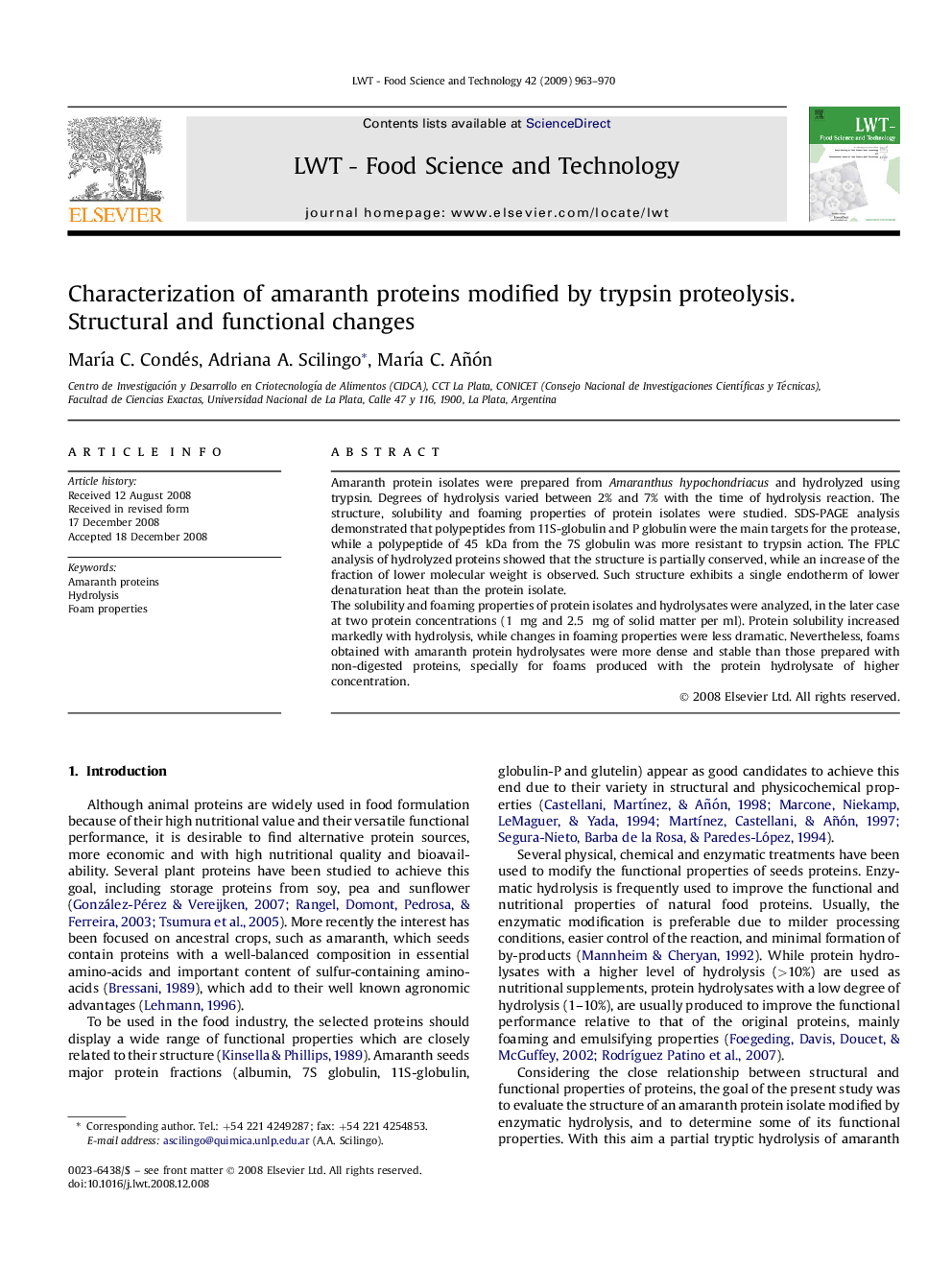| Article ID | Journal | Published Year | Pages | File Type |
|---|---|---|---|---|
| 4564886 | LWT - Food Science and Technology | 2009 | 8 Pages |
Amaranth protein isolates were prepared from Amaranthus hypochondriacus and hydrolyzed using trypsin. Degrees of hydrolysis varied between 2% and 7% with the time of hydrolysis reaction. The structure, solubility and foaming properties of protein isolates were studied. SDS-PAGE analysis demonstrated that polypeptides from 11S-globulin and P globulin were the main targets for the protease, while a polypeptide of 45 kDa from the 7S globulin was more resistant to trypsin action. The FPLC analysis of hydrolyzed proteins showed that the structure is partially conserved, while an increase of the fraction of lower molecular weight is observed. Such structure exhibits a single endotherm of lower denaturation heat than the protein isolate.The solubility and foaming properties of protein isolates and hydrolysates were analyzed, in the later case at two protein concentrations (1 mg and 2.5 mg of solid matter per ml). Protein solubility increased markedly with hydrolysis, while changes in foaming properties were less dramatic. Nevertheless, foams obtained with amaranth protein hydrolysates were more dense and stable than those prepared with non-digested proteins, specially for foams produced with the protein hydrolysate of higher concentration.
